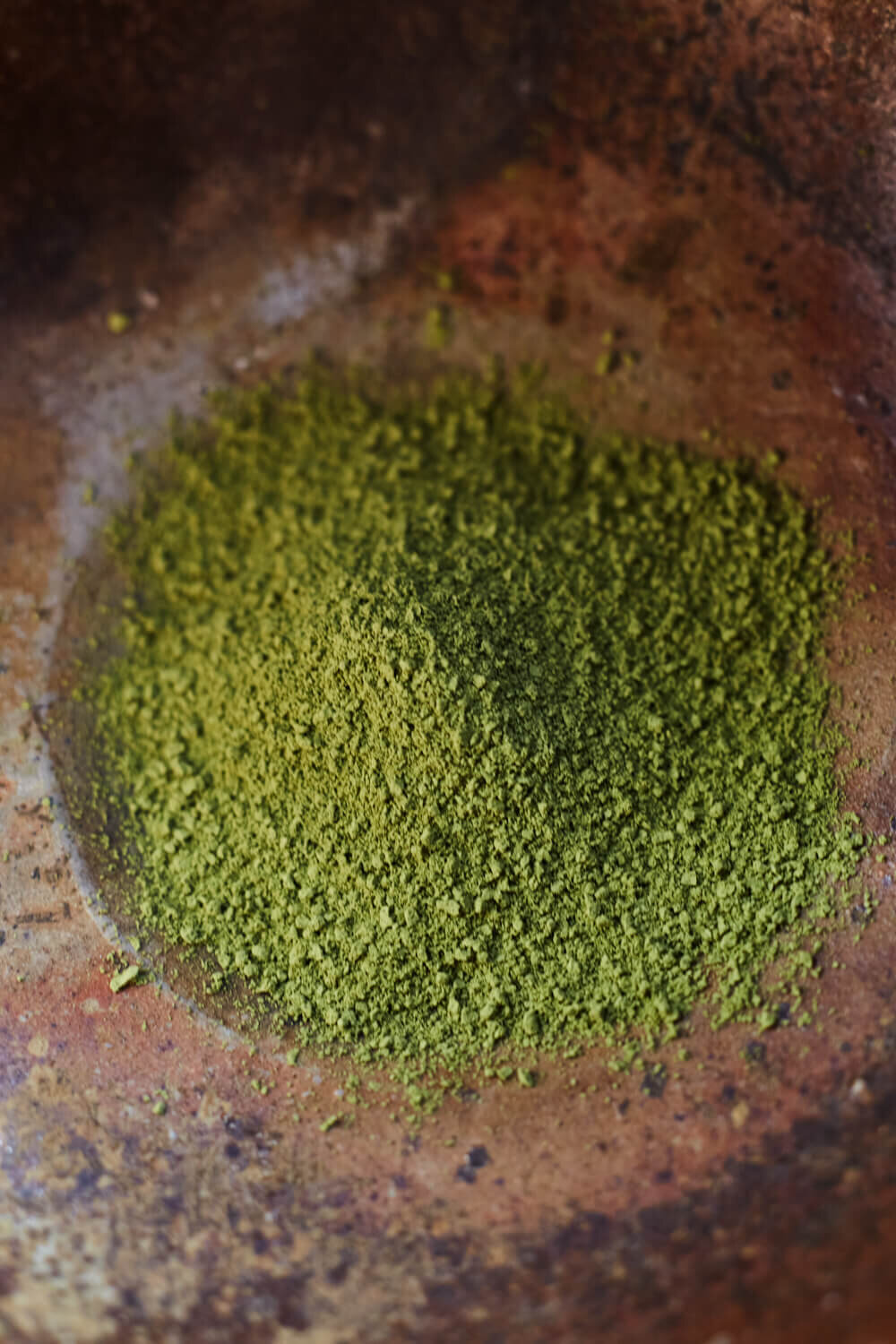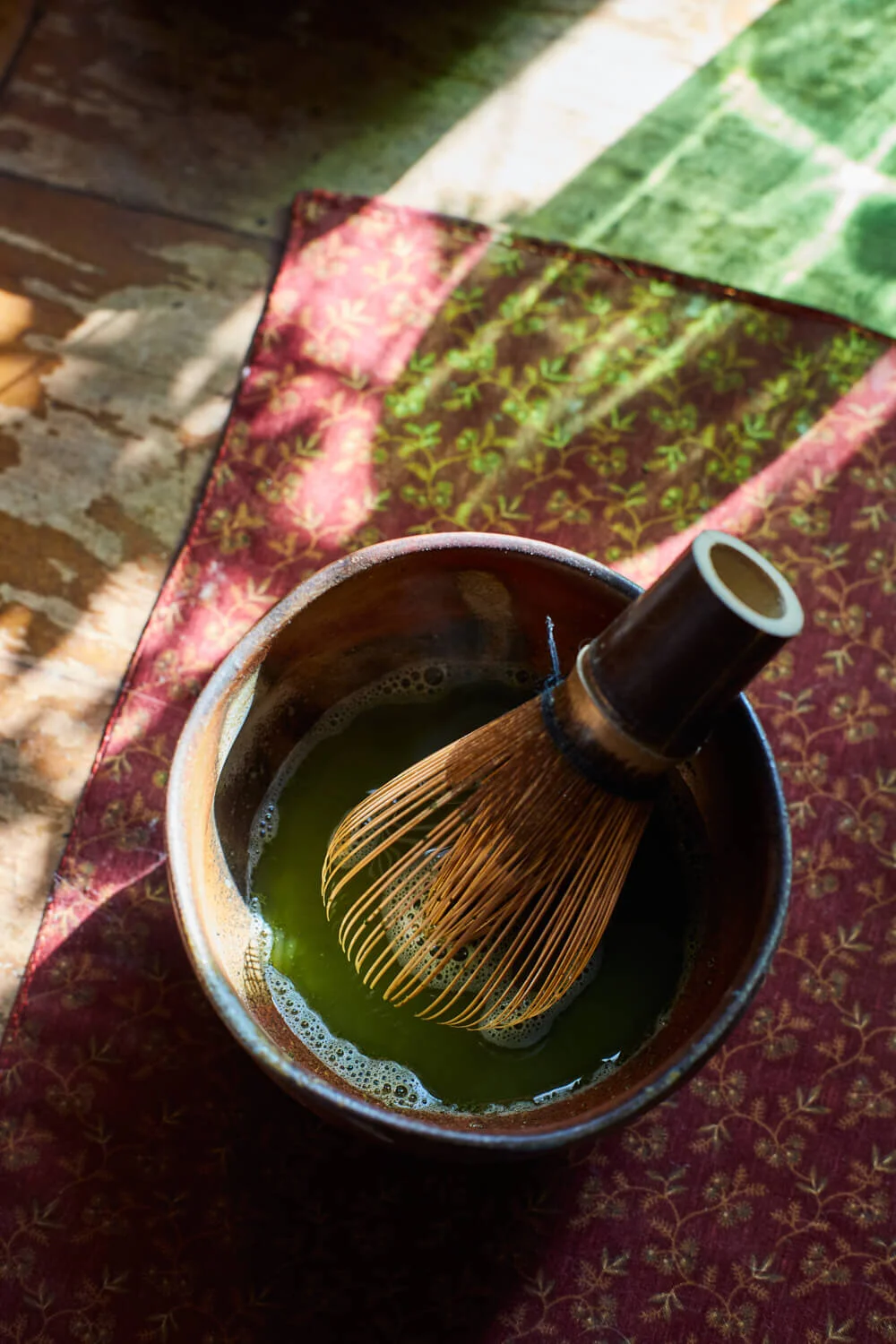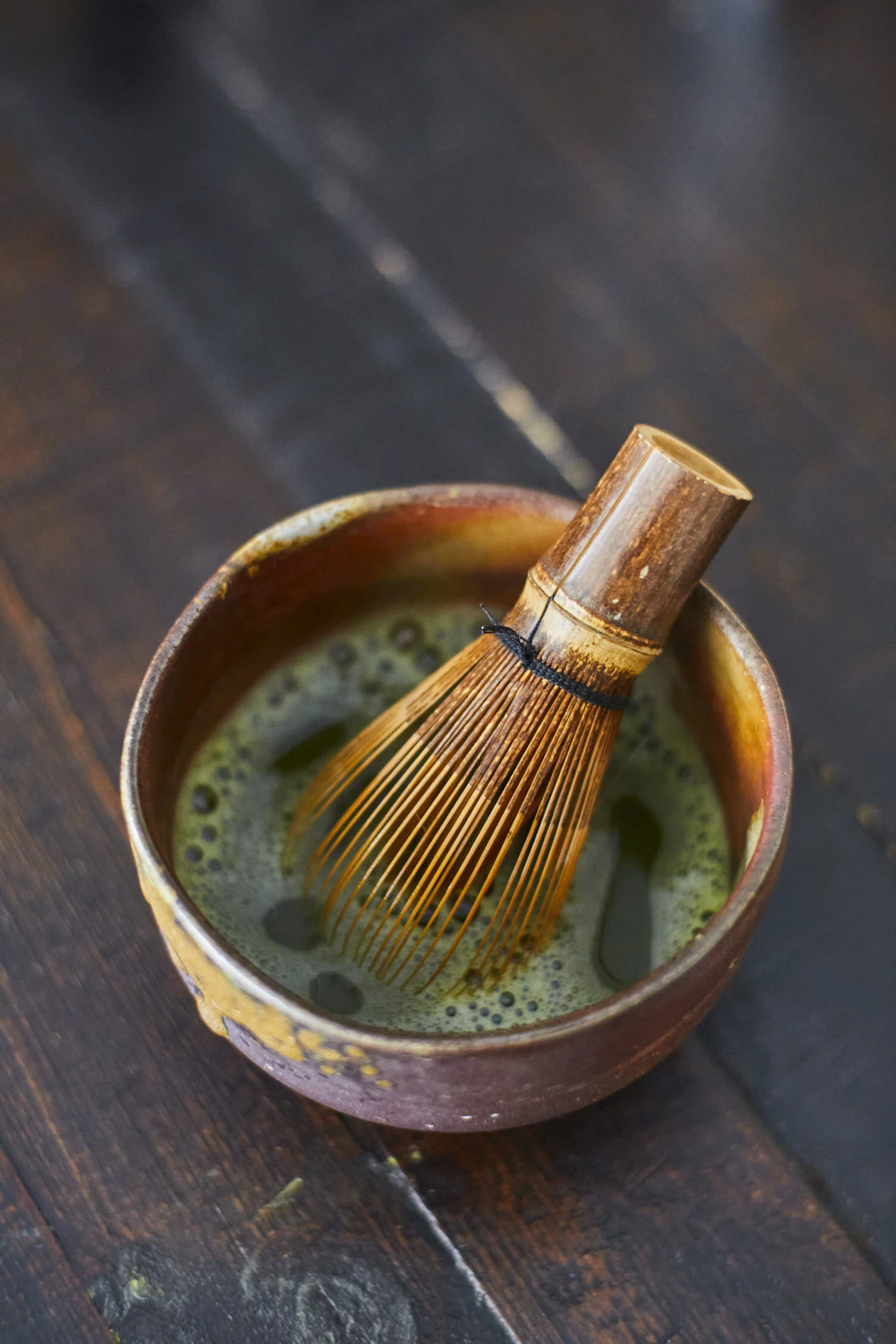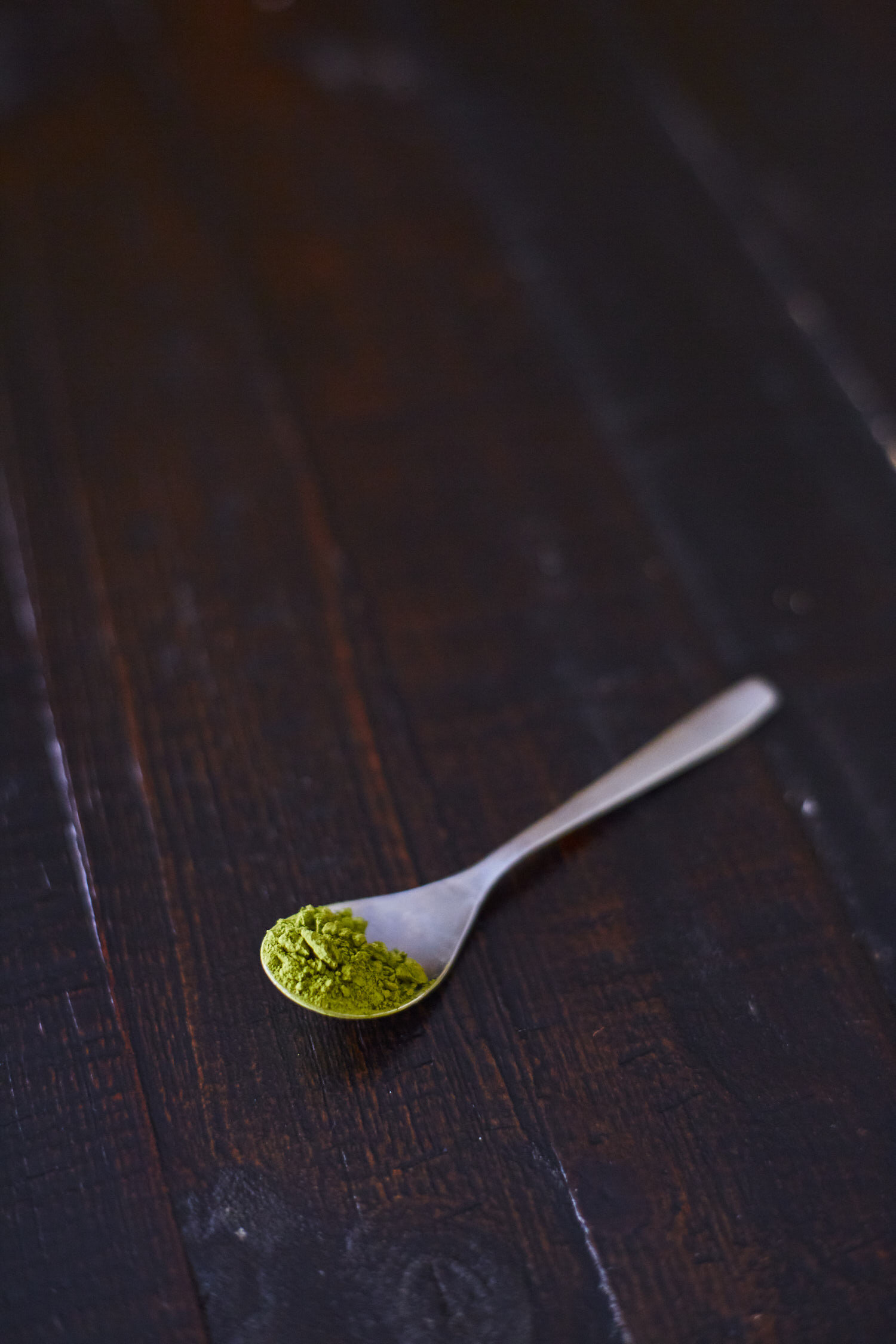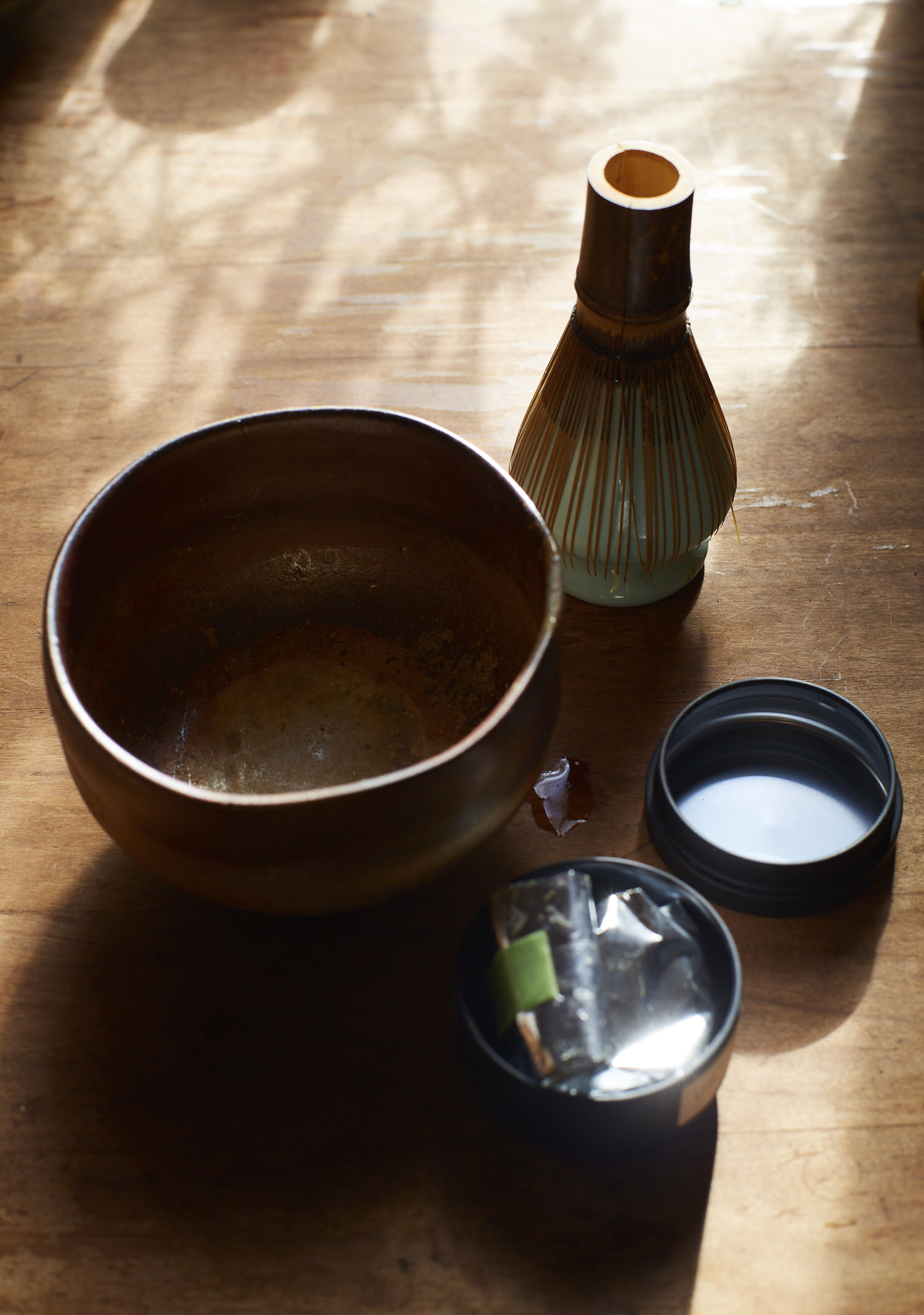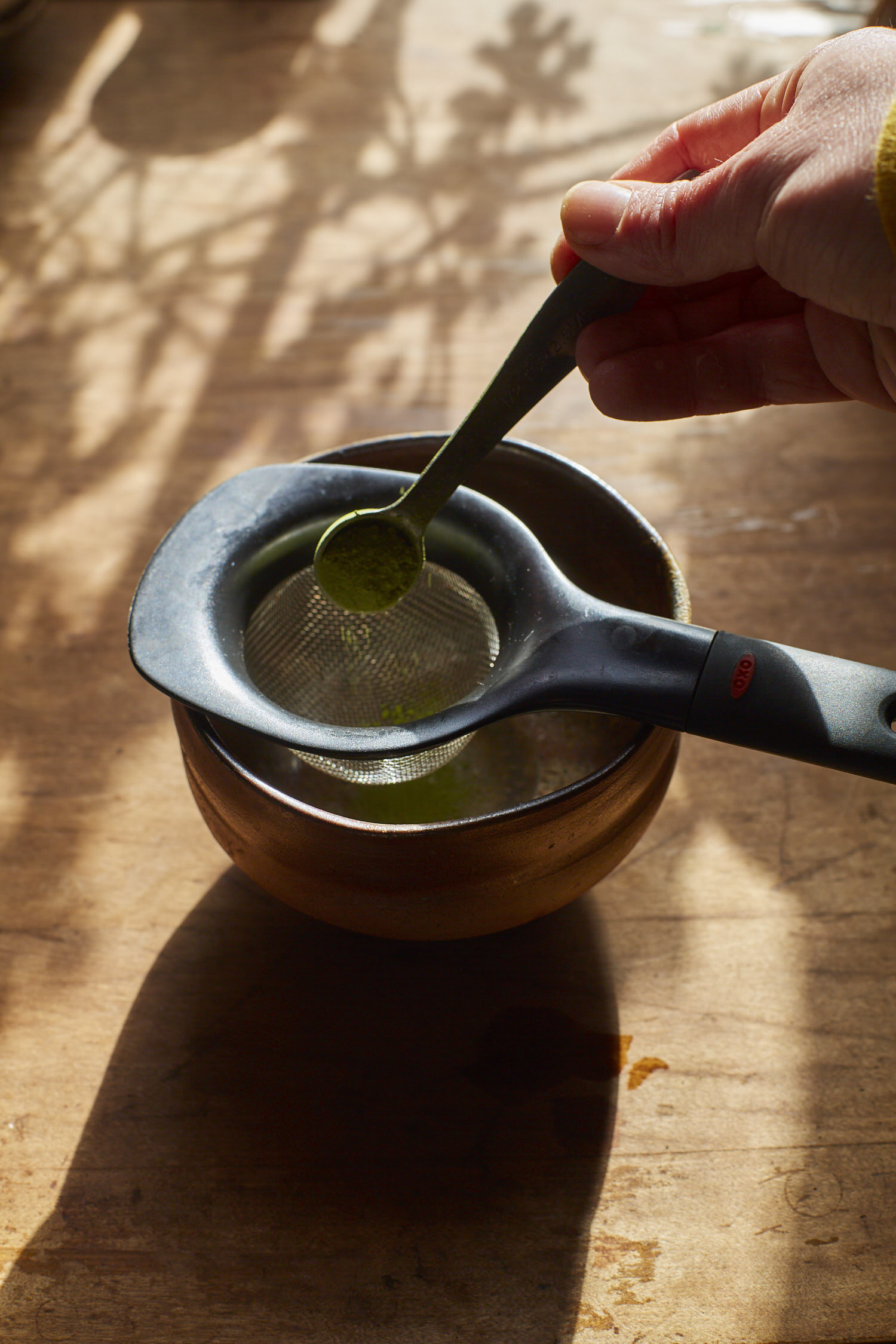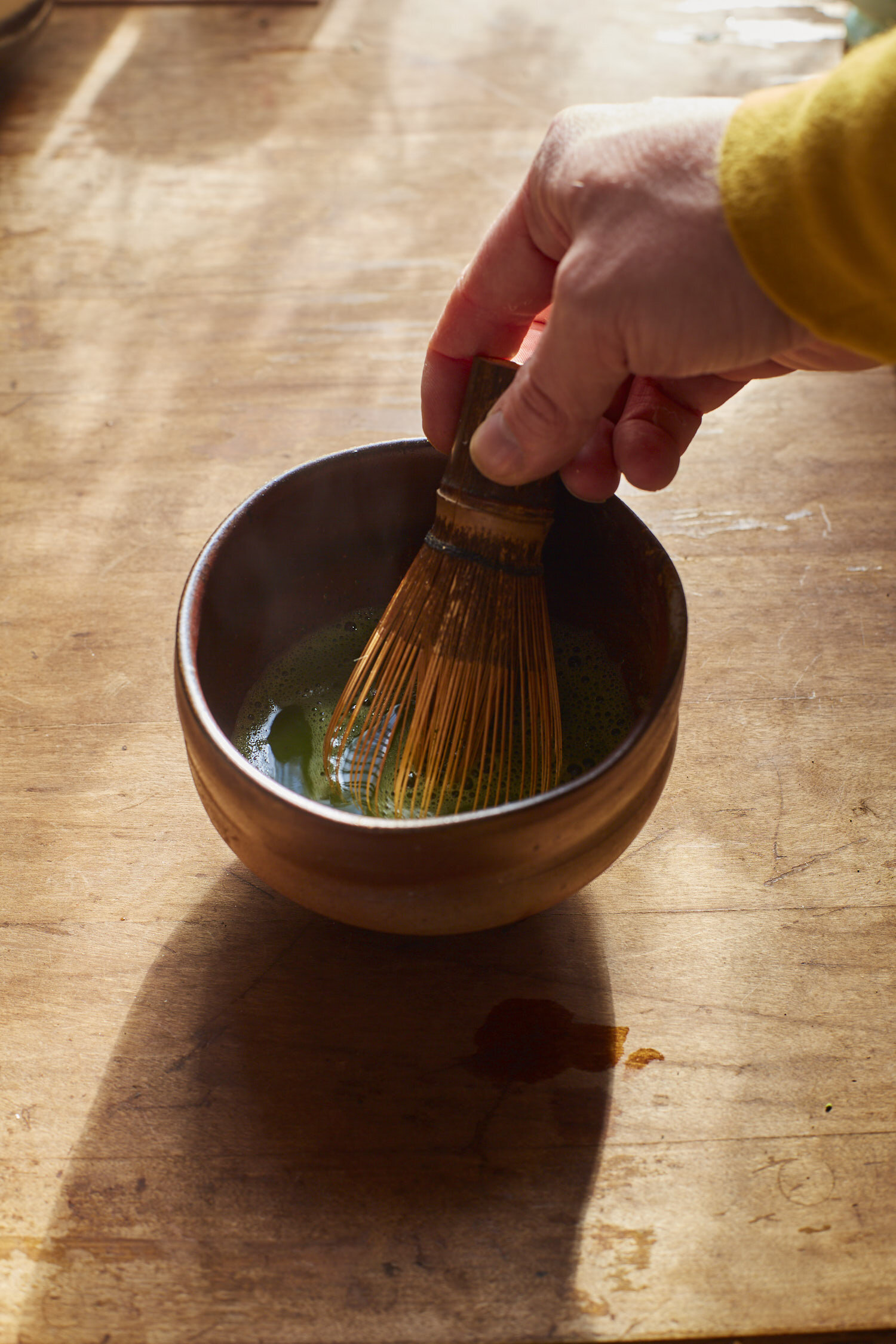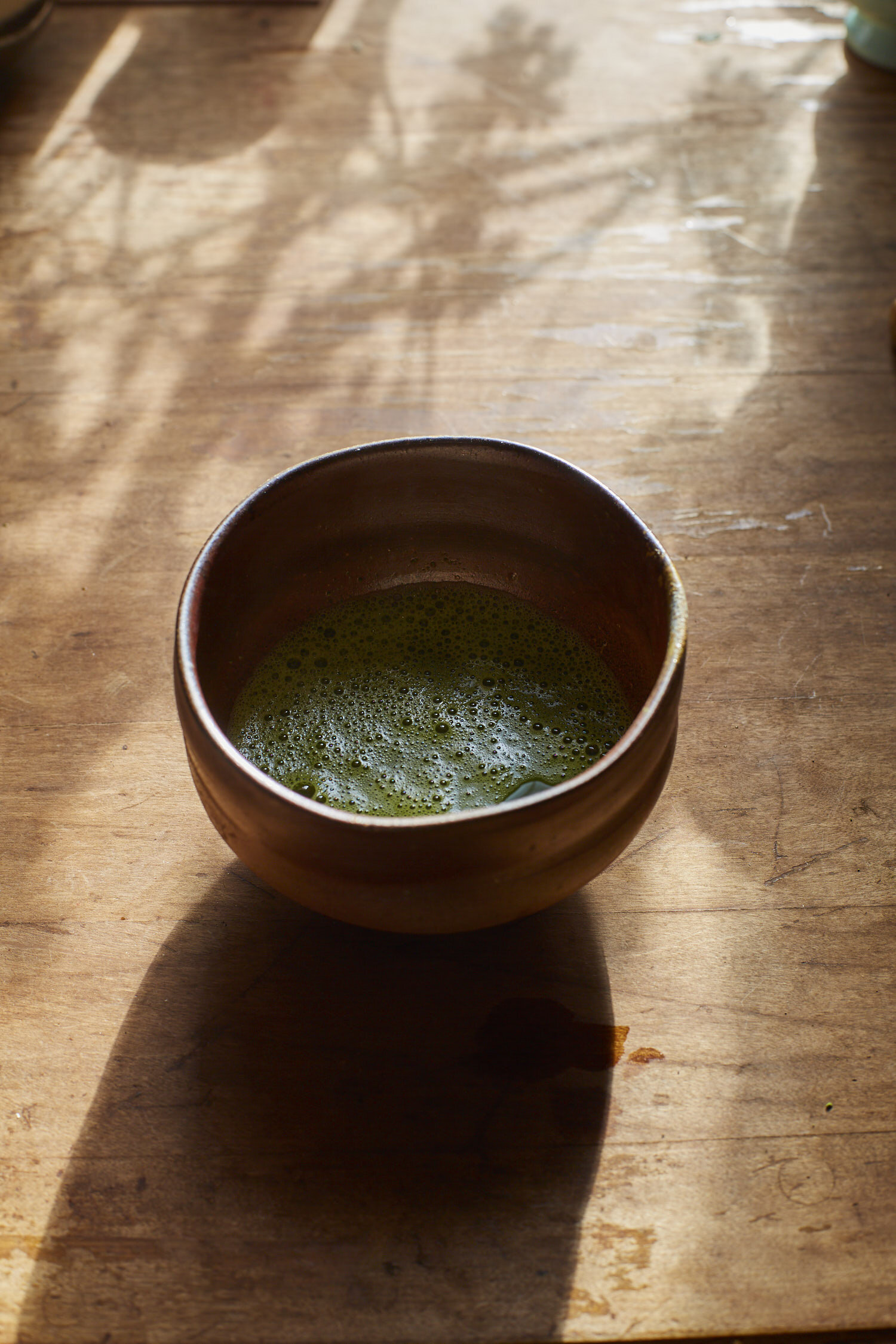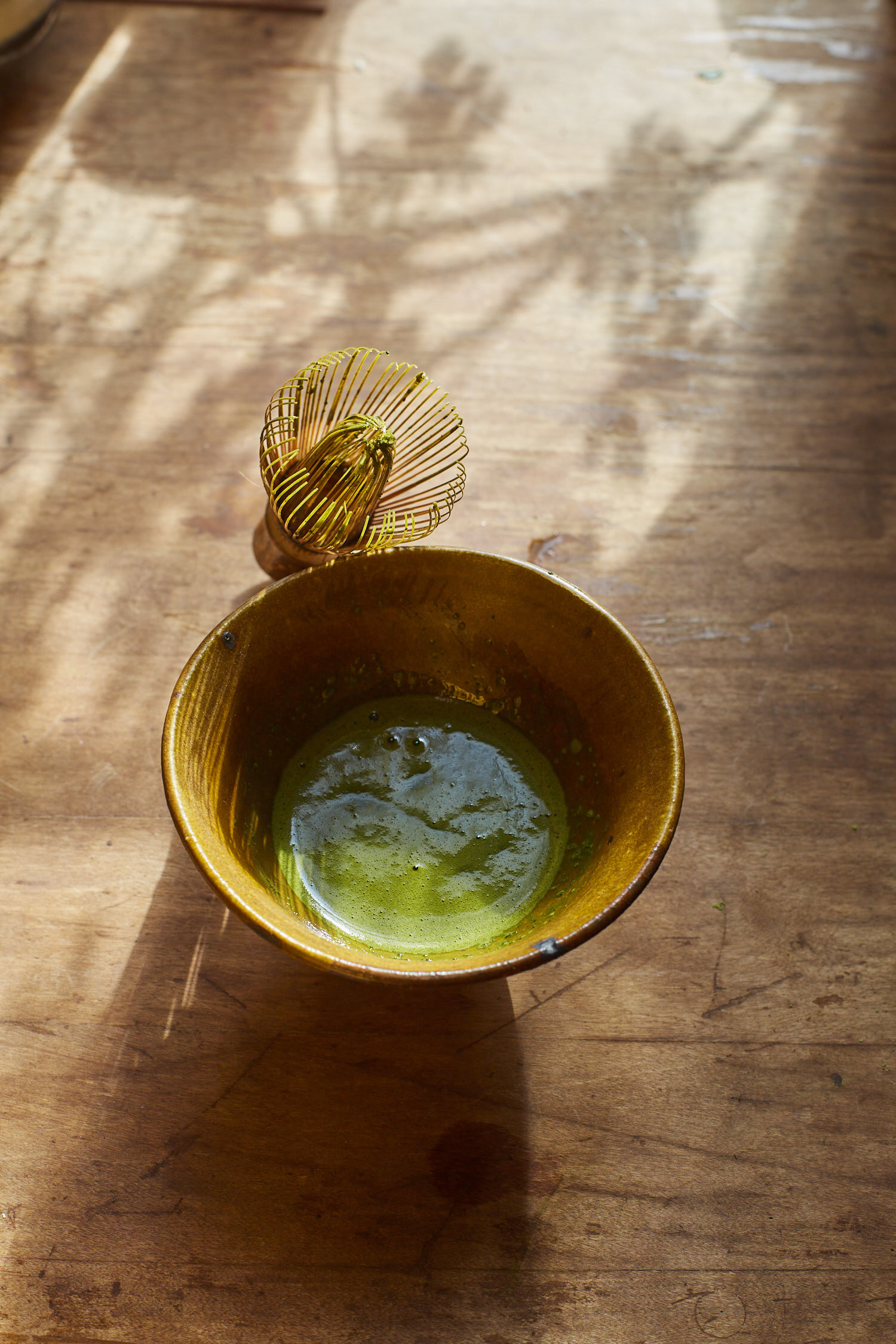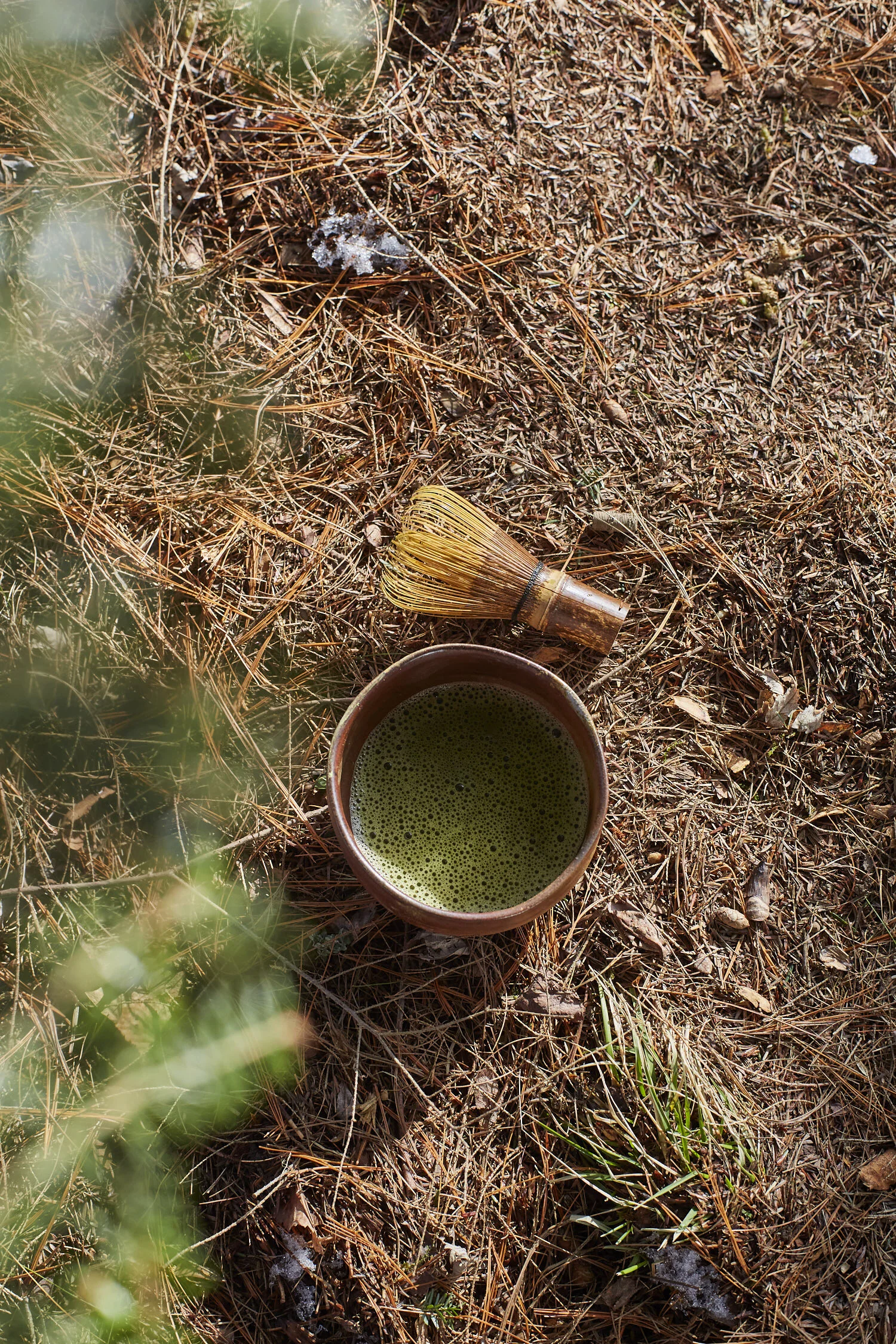What is Matcha? (The World’s Most Comprehensive Guide)
I’m sure you’ve heard about matcha green tea, known for its health benefits, its bright fresh flavor, and caffeine kick. This Japanese green tea is everywhere right now. But what exactly is Matcha Green tea?
Matcha has a long, interesting history. And beyond that, there’s so much that’s missing from the flavor and experience when you order a matcha latte from Starbucks. That’s why I made this guide. It will go over everything you need to know about Matcha in one concise guide such as:
We’ll clear up all the confusion around:
What Matcha green tea is,
How to Make Matcha at Home.
Where Matcha Comes from.
And where to get good Matcha from.
I wrote this guide so an absolutely beginner can understand it, while still getting a robust, deep understanding on the topic - in a clear and fun way. So, let’s start!
What is Matcha?
Matcha is a stone-ground green tea powder tea from Japan. This powder is then mixed with hot water, whisked with a bamboo whisk, and consumed… And there are more or less two standard styles:
Ushucha, and:
Koicha.
The difference between Ushucha and Koicha is just in the ratio of water to Matcha Powder. So compared to regular green tea that is steeped matcha is a different experience.
Ushucha Matcha
The most popular way to drink Matcha is by combining it with hot water and whisking until frothy. This is known as Ushucha which means thin-tea. When you “think” Matcha this is probably the drink that comes to mind.
Koicha Matcha
Koicha on the other hand is matcha combined with less water, making a thick cream-like mixture. It’s fairly intense and in America, it’s not something you’d often see. It’s translation means thick-tea.
What Makes Matcha Unique?
Matcha is usually bright and energetic and tastes savory, vegetal, and a little sweet.
Matcha is a little different than a loose leaf green tea because you’re drinking the leaf, not the brew (meaning more antioxidants, caffeine, and maybe health benefits.
And there are a lot of misconceptions when it comes to grading Matcha.
3 Elements that Make Matcha Different from Other Green Teas?
There are three main differences between Matcha Green tea and a typical Chinese green tea or Japanese green tea.
1 - Grinding
First, Matcha is ground up into a fine powder that is between 5 to 10 microns large. “Large” as in 1 micron is 0.001mm. This small size contributes to the smooth, creaminess of Matcha and it’s ability to foam.
Another byproduct of the small size of the grains is that it is susceptible to electric static. (Which is why Matcha clumps together, like cocoa powder!)
2 - Shading
Secondly, a month before the leaves are plucked to make Matcha tea, the entire tea field is covered.This is known as “shading” or “kabuse” in Japanese. In fact, Matcha is a subcategory of green tea known as “Kabusecha” which means “shaded green tea.”
This is an entirely Japanese process and is important for developing the savory, umami notes in the tea leaves used for Matcha (as well as the deep color.) We’ll talk more about shading further in the article.
3 - Blending
Last is blending. Almost all Matcha is made by blending different materials. You can think of Matcha like a blended scotch:
A master blender will taste the new raw material (called Tencha) from a harvest.
And will blend it with old harvests from years before (kept frozen.)
The goal of the blender is to keep the taste of the Matcha uniform from year to year, which is nearly impossible because every year the material changes. The best Matcha producers will, theoretically, do the impossible and carry the same tastes from year to year.
Ooika is unique in that we focus on unblended, single-cultivar Matcha. It’s important to realize that this is rather avant-garde and is not a traditional practice.
Taste and Aroma
Just like any high-quality tea, matcha will taste different depending on:
Where it’s grown.
How it’s grown.
What varietal of the tea plant is used.
And how it’s processed.
But Matcha has several other features that are unique to the tea that affects the taste, aroma, and quality:
The speed at which the Matcha is ground (and by what kind of grinder.)
The skillset of the master blender.
How long the tea plants were shaded before harvesting.
So there are nuances between different matcha, but overall Matcha tastes:
Savory
Vegetal
Fresh (like cut grass)
Also, here’s a full guide on the favors and tastes in Matcha.
Terroir – Where Matcha is Grown
Matcha is grown in a few regions of Japan, but mainly in the south of the country. Tea is a lot like other geographically specific beverages (say, wine). This just means that the growing locations of tea plants matter a lot. This concept is called terroir, which refers to the microclimate or a specific location and how light, water, soil, and all other growing conditions come together to create and impact flavor.
So naturally, some areas will be more suited for growing a specific plant, which is absolutely the case for tea. Below are the main growing locations for matcha. Some of which are known for producing higher quality and better tasting teas than others.
Before we get into that I recommend you check out my article on the 5 best Matcha regions in Japan, here. It’s a deep dive in to the topic. But anyway, here are some spark notes:
Uji Matcha
Uji is a region in Kyoto Japan. It’s known for producing some of the most prestigious Matcha in the country and has a long legacy. Uji is a fairly small region, and can only produce a relatively small amount of tea meaning it can be pretty expensive.
Matcha from Uji is known for having oceanic, nori notes and can be some of the most sought-after Matcha on the planet. Within Uji, there are smaller micro-terroirs that have varying degrees of reputation. As it happens, Ooika has a set of three Matchas from Shirakawa, Uji in our Shirakawa Sampler Flight where you can taste various Matcha from this region.
Fukuoka Matcha
Fukuoka is a prefecture in Kyushu, which is on the southwest end of Japan and the mountains of Fukuoka are the first place tea was grown in Japan! One of the most famous teas growing regions in Fukuoka is Yame. (Which is located in the North of the prefecture.) The teas grown there are usually processed as high-end loose leaf green teas such as Sencha and Gyokuro (not as matcha) - but you can find some Matcha in the region.
Shizuoka Matcha
Shizuoka is the prefecture that’s home to Mount Fuji, Japan’s highest peak. Shizuoka is the largest tea-producing prefecture in Japan. It produces around 40% of all Japanese tea. Most of that is loose leaf green tea such as Sencha, but because of increased international demand includes producing some matcha.
Kagoshima Matcha
Kagoshima has rich volcanic soil and this makes for great tea growing. They’re mainly known for their loose-leaf sencha tea. But some matcha is produced there.
Aichi Matcha
Within Aichi prefecture, the town of Nishio is the top terroir. This growing location has fertile soil and a climate that’s great for tea growing making teas from this region some of the best in Japan. Alongside Uji matcha, Nishio matcha is some of the most sought-after, high-quality, expensive tea.
Blending from Different Regions
It’s worth briefly noting that on occasion Matcha from different regions is blended. This can be done for marketing purposes, or simply for experimentation. Pricing of these blends will depend on the terriors the source materials come from.
History of Matcha
Matcha has a long and interesting history from how the tea plant came to Japan, to the way, matcha is prepared. This history is important to know if you want to get to understand matcha a little better. It can be a lot of information to master, so we’ll keep it brief.
Chinese Origins
It might surprise you to learn this, but Matcha originally comes from China - where tea was ground into a powder known as “muo cha” back in the Song dynasty. Tea was compressed into bricks (which it still is especially in Sheng Pu Er.) When you wanted some tea, you’d break off some leaves, grind it up, and whisk it with some hot water. That tea was likely a lot different than any tea we drink today ad not very similar in taste to modern-day Japanese Matcha or even green tea.
But the origins of matcha being whisked come from this. Ultimately China moved on to loose tea and abandoned the grinding processing. This practice continued to live on in Japan, though!
From China to Japan
Tea in Japan is heavily linked to zen Buddhism. A Buddhist monk named Eisai who was studying in China is credited with bringing back tea seeds and the process of whisking tea back to Japan. From here, tea processing, and eventually matcha, became quite important within zen Buddhism in Japan.
And some modern-day tea growing locations had their start with tea bushes sowed by monks. A few hundred years later tea became more popular culturally when it was more widely consumed.
Chanoyu and Sen no Rikyū
Tea was made even more popular by Sen no Rikyū and chanoyu (the way of tea). Chanoyu is synonymous with the Japanese tea ceremony, which is a highly ritualized, almost performative way of making tea. The tea of choice for these ceremonies is always matcha.
Who Was Rikyū?
Sen no Rikyū was a Japanese tea master living from 1522-1591. In those days, tea masters served feudal lords, politicians, or other powerful people in society. Because of his relationships with high-powered officials, he became incredibly influential himself within the world of chanoyu. Rikyū had a profound impact on the Japanese tea ceremony and chanoyu.
Specifically, he had a large impact on the concept of Wabi-cha which is a style of making tea that focuses on simplicity and the appreciation and attention to every day allowed tea drinkers to contemplate life. So in a sense, the whole practice that includes the tea ceremony acts as a spiritual tool allowing for greater understanding and contemplation of life.
His practice of chanoyu thought through everything: the architecture of the tea room, the gardens outside, the process of making tea, the teaware itself, and even objects in the tearoom. After his death, 3 separate schools teaching chanoyu emerged:
Ura senke.
Omote senke.
And Mushanokōji senke.
The main thing to note is that these are slightly different styles of tea ceremonies and the main goal within all teachings still boils down to self-cultivation.
Modern-Day Tea Culture
You can still find a lot of “schools” teaching the traditional chanoyu tea ceremony. But recently, the younger generations (who seem to prefer coffee) have started to refocus on high-quality tea. Even in the US, many shops are embracing the beauty and flavor of good Japanese tea. Including a few of my favorite shops in NYC, Kettl, Setsugekka — and even us, Ooika!
How is Matcha made?
If you’re familiar with the processing of other Japanese teas (or even Chinese tea) then most of this will sound familiar. Essentially, the major differences in matcha production happen during growing (the tea leaves are shaded), processing (the tea leaves are ground into a powder), and the final blending.
Growing and Shading Matcha
One of the distinct aspects of growing most Japanese tea – including matcha –is that it’s usually shaded before picking (known as Kabuse.) When growing the tea that becomes matcha, the leaves are deliberately covered so less light gets to them. One of the hallmarks of good matcha is the duration of shading before harvesting.
Cheap matcha is covered for a brief period, while the best Matcha may be covered for over 6 weeks with up to 90% of the light blocked! Why would anyone do this? Good question: it changes the chemical composition of the tea leaf.
While there are many complex changes, the three biggest are:
Increasing the amount of L-Theanine, a savory-tasting amino acid responsible for making you feel relaxed when drinking tea.
A decrease in the Catechins, a polyphenol that is tannic and astringent tasting.
An increase in the Chlorophyll in the leaf, which makes Matcha that vibrant, electric green.
Quick tip:
L-theanine is converted into Catechins in the leaf when exposed to sunlight. Catechins are antioxidants in green tea responsible for the astringent flavor. This is why most Matcha is both savory and has low levels of astringency.
Picking
Traditional Picking
The most traditional way to pick tea leaves is by hand, a practice known as “Tezumi.” Tezumi is a rare practice in Japan due to the high labor costs and low efficiency. In fact, less than 5% of tea in Japan is still picked in Japan. But it has a number of benefits for the final tea.
Precise picking means proper landing of the fragile leaves, less damage to the bush, and less undesired leaves in the final tea.
With how extremely time-consuming hand picking is, handpicked tea is pretty old-school and is usually a lot more expensive. But it does result in a final Matcha that is noticeably more luxurious and refined.
Modern Picking
Nowadays, Japanese teas are usually picked by machine. Over the years, farmers have implemented these ingenious machines that chop off all the new buds without damaging the plants. These tea picking machines are usually held by two people and walked above a row of tea bushes.
Processing Matcha
Matcha goes through a few different processing steps which makes it a lot different than other teas, the most unique being that it’s stone-ground. But before the tea is ground, it has to be made into a green tea… The growing and processing of loose green tea is the most important part of the making matcha process.
Why? Because this is where the tea develops flavor and complexity. Poorly grown or made loose leaf green tea will never make good matcha.
Tencha
Matcha is the final ground version of a style of tea meaning it’s processed as a loose leaf green tea first… then ground. This loose leaf version of matcha is called tencha. ‘Ten’ translates to ground or grind and ‘Cha’ means tea. So think of this like any other loose leaf green tea… except it’s not.
Tencha is an unrefined tea product, known as Aracha (荒茶) which translates to “crude tea.” People don’t usually drink this on its own like they would sencha or a Chinese green tea. As a result, it’s pretty difficult to get your hands on tencha to try yourself - although Ooika is the only Matcha company in the world that offers the Tencha for all of our Matchas to try.
Why Tencha isn’t a Refined Product
It’s almost like trying to buy the grape juice used to make a very expensive French wine. It’s just not something that you do or could find on the market. Ooika provides it not as a salable product but more as an educational experience. Tencha is very important: because master Matcha blenders taste test it to determine their blending proportions.
One of the most important things to remember is that the tea leaves must be shaded (covered with translucent material) while growing for about 4-6 weeks before the leaves can be processed into tencha. So how’s tencha made? It’s pretty simple actually but kind of unique in some ways.
Tencha Processing
Steaming
All green tea must go through a process called kill green to retain its green color and flavor. This process stops the enzymes in the tea from further metabolizing. Put simply:
This process stops any further chemical reactions in the leaf thus locking in flavor and color. Japanese teamakers heat the leaf with steam, which causes the enzymes to halt their processing. Chinese tea makers tend to use a pan-frying technique for the kill green. Steaming the leaf brings out more umami and sweetness (similar to steamed vegetables) and these flavors are essential to Japanese green tea.
Cooling
After the tea leaves are steamed, they go through a cooling process. This is done in a controlled way to ensure the leaf dries properly and doesn’t retain any excess moisture. Nowadays this is done on conveyor belts that blast air on the leaves as they pass by.
It’s important to note that other Japanese green teas (like sencha or gyokuro) go through a rolling or shaping process before cooling. Tencha green tea leaves do not because they are considered an unrefined product that most Japanese will consider unfit for drinking. This rolling process breaks the cell walls, thus allows the tea to seep out more flavor during brewing.
Because the cell walls of tencha are not broken, less flavor seeps out when brewing the tencha - resulting in a mellow, light brew. Remember: ultimately the cell walls are broken when the tencha is ground into Matcha.
It’s worth noting that the hallmark of Japanese tea is a craft - the intersection between man and nature. Chinese tea, on the other hand, tends to focus more on mother nature. Not that craft isn’t important for Chinese tea making – it is! Only that the Japanese put more emphasis on blending, controlling tastes, and refining the product. While the Chinese teas have more wild variance between tea seasons, have wild teas that are plucked, and enjoy “unrefined” teas such as White tea.
Drying
With any style of tea, the precise control over moisture content in the leaf is incredibly important - especially with tencha. After the cooling process, the tencha leaves are then spread out and dried further. This ensures that most of the moisture leaves the leaf and prepares it for the stem/vein removal step.
Vein/Stem Removal
Before the leaves are fully dried, they’re then run through a machine that gently tumbles them — or in some cases is done by hand. This removes the stems and veins from the leaf. If left in they would produce an unwanted bitter flavor when ground into matcha.
Storing and Freezing
Matcha is often sealed in airtight bags and stored in a freezer/ This ensures that no extra moisture enters the tea and limits the amount of air the tea has access to. Both of which ensure the tea stays as fresh as possible. This freezing or refrigeration seems to be unique to Japanese tea as fine Chinese tea is typically not refrigerated.
Blending
One of the unique (and sometimes forgotten about) steps in matcha processing are blending. In reality, all this term means is that different vintage of matcha are mixed to create a finished tea. You may be a little confused as to why you might mix “old” green tea with fresh new green tea. I know I was.
The answer is pretty straight forward – blending attempts to create a final tea that tastes similar year after year. It’s about consistency. But this process takes true talent and mastery to achieve as you need to “predict” what the final Matcha will taste like, having only tried the unrefined Tencha.
Grinding
After the tencha is made and dried its stone-ground into a fine powder. The grinding can have a great deal of effect on the taste of the final product – and price. There are a few different ways to grind Matcha:
Stone Grinding
The best matcha is ground slowly on a special kind of granite stone called an Ishi Usu. One of the benefits of using Ishi Usu is that the slow grinding keeps the temperature low, preserving the delicate notes in the final product.
But there’s a BIG drawback to using these slow stone grinders: They process very, very slowly. In fact, in one hour a stone mill can only produce about 30 to 40 grams of Matcha – about the size of a small tin you’d buy. This means the producer can only produce a relatively small amount of Matcha. At Ooika, we are one of the only companies in North America that grind all of our Matcha fresh, in-house using traditional stone grinding.
Machine Grinding
To speed things up, a tea processor may use modern grinders that can produce hundreds of grams per minute or more. The downside is the heat from the speedy grinding will affect the final taste. This isn’t a problem if the matcha will be used for culinary uses like putting in baked goods or sugary drinks, so this method of grinding has its purposes but it might not be ideal for high-quality master blends.
And, that’s it! You now have Matcha.
Storage of Matcha (AKA Shelf Life)
One last point before moving on: After Matcha is ground it has a short shelf life before it begins to go stale, or at least, lose its luster. It’s generally accepted that 16 months after grinding is when the Matcha wouldn’t be fit to serve if it was considered of good quality though supermarket Matcha may even be older.
Kept at home properly (more on this later) your Matcha will be fresh for a year. However, Matcha has a noticeable decrease in flavor in as little as one of two months. In an ideal world, the Matcha would be consumed as quickly after the grinding as possible. Though living outside of Japan makes this more or less an impossibility. One of the reasons Ooika was created was to challenge this paradigm, as we mill our Matcha fresh in small batches.
Grades of Matcha
Just like most kinds of tea, matcha comes in different qualities. These qualities have a lot to do with:
Where the tea is grown
How it is grown
When it’s picked
And how it’s made
But, it’s very important to recognize that there are no ‘official’ grades of Matcha Terms like “ceremonial” are thrown around but they have no meaning. This is a concept we covered in a recent article titled culinary vs ceremonial Matcha.
It’s the same as using the word “high quality” to describe something. We’ll go over some of the common terms that Matcha producers will use… These can be a proxy for quality. But real quality matcha needs to be:
Shaded for three to four weeks before being picked.
Made of specific terroir material.
Typically not organic. (Surprising I know, but more on this in the FAQs.)
Blended by a highly specialized Matcha blender.
Consumed within a “reasonable” amount of time after being ground. (This is a BIG topic we’ll cover in a separate article. “Reasonable” changes from producer to producer. 30 days is ideal but typically not possible for Matcha important across the world.)
Ceremonial Grade
Ceremonial grade is – again – like the word “high quality.” It may or may not be - ceremonial grade really describes how the producer suggests you use their product. In the case of Ceremonial, they are recommending you drink it (rather than use it in baked goods, or other culinary applications.)
Typically ceremonial Matcha will usually have the smoothest profile, light or low bitterness with an electric brightness. and light sweetness. Most importantly: savory, rich umami tones. This is the grade that’s used for the chanoyu tea ceremony.
Barista Grade Matcha
These teas tend to be the “middle of the road” kind of matcha - meaning they’re not overly bitter but they’re also not the most nuanced. So they blend well with things like sugar and milk and thus have less subtly, complexity, and have more bitterness to stand up to additives.
In terms of production, these types of Matches are made with late summer-picked tea leaves. These leaves are cheaper and more bitter compared to the spring and early summer plucks.
Culinary Grade Matcha
Most of the matcha you’ll find in grocery stores will likely be culinary matcha. And even if you find “ceremonial grade” Matcha at a grocery store, it probably should be labeled as culinary grade - as Matcha should not be kept at room temperature.
Culinary Matcha is by no means bad though. Culinary has wonderful applications in baked goods, smoothies, and ice cream. Its intensity and relative simplicity make it strong enough to stand up to other ingredients. (Higher end, ceremonial Matcha is too delicate to be combined with sugar or more.
Plus, most people discover their love of Matcha through the “Gateway” drug of Matcha Lattes, and other culinary grade applications of Matcha. To keep the price affordable, lots of shortcuts are taken:
Faster grinding, with modern industrial grinding.
No master blenders, cheaper materials.
Rushed, incomplete, or only partial shading.
Late season harvesting.
Its best use is in the kitchen – for cakes, cookies, sweet matcha drinks. It’s much more bitter than other kinds of matcha, making it less enjoyable for everyday drinking. If you do drink it you’ll find it usually is very bitter, with not much savoriness. Often it will be dull, or even slightly lifeless in color.
Matcha Benefits
In recent years, matcha has become incredibly popular. Part of its popularity revolves around all the supposed health benefits it’s said to have. Overall, these benefits are sometimes overplayed for marketing reasons. But there are definitely some solid (scientifically backed) health benefits that make matcha a pretty healthy beverage.
First and foremost, matcha contains high amounts of antioxidants and green tea catechins (which have been shown to fight cancer). Why does matcha have higher quantities of antioxidants? Simple: Unlike a regular green tea (aka steeped green tea), you’re actually consuming the tea leaf when you drink matcha – it’s suspended in the water after being whisked.
Consuming the leaf, and not just its brewed liquid, results in higher quantities of antioxidants being ingested. Additionally, matcha contains high levels of L-theanine, an amino acid that makes you feel relaxed and has even been linked to better brain function and a decrease in stress.
And because of the unique processing steps of matcha powder (mainly shade growing) it contains up to 5 times more L-theanine than regular green teas. Green tea has even been linked to lower blood pressure and lower rates of heart disease. Generally speaking, green tea leaves also contain high chlorophyll levels which also makes it super healthy!
Does Green Tea Have Caffeine?
Yes. Matcha tea has caffeine — and in fact all tea contains caffeine. Herbal “tea” is not actually tea at all, but rather a Tisane. It’s important to recognize that while Matcha has caffeine, it will not affect you to the same degree, or in the same way, as in Coffee - as the relaxing effect of L-theanine retards much of the effect of caffeine.
In fact, we wrote an entire article about caffeine in matcha.
How to Make a Bowl of Matcha
There are two common types of Matcha preparation: Usucha and Koicha.
Usucha is what you “think of” when you think of drinking Matcha.
Koicha is a little gutsier: a thick syrup-like concentrated matcha.
Making a bowl of matcha can sound a little intimidating especially if you don’t have the right tools. But no worries as it’s actually pretty simple. Plus you can improvise if you need to. To make things really easy, we have the steps below to make Matcha, as well as video guides!
Making Traditional Usucha (Thin Tea)
Let’s start by making a traditional Usucha — what we “think of” when we picture a foamy bowl of Matcha. You can watch the video and then follow the step by step instructions below.
Here’s what you’ll need:
A Chawan (traditional tea bowl) or a small bowl.
A Chasen (bamboo whisk) or kitchen whisk.
A Chashaku (tea dispensing spoon) or teaspoon.
A Matcha Furui (matcha sifter) or something to sift the matcha through.
Here’s how you make the perfect cup of matcha at home:
It’s important to note that water temperature is crucial to get a good bowl of matcha. You don’t want it too hot or too cold. So aim for water that’s about 175F/80C. So no boiling water!
Step 1
Sift a generous teaspoon (about 2 grams) of matcha into the chawan or bowl (if you don’t have a sifter, no worries)
Step 2
Slowly add about 60 grams of cooled water (175F/80C - no boiling water!) to the bowl.
Step 3
Whisk the tea by making a swift ‘W’ shape. The goal is no clumps and a nice layer of froth on top. Don’t let the whisk scrape the bottom of the bowl.
Enjoy!
Making Traditional Koicha (Thick Tea)
Here’s what you’ll need:
A Chawan (traditional tea bowl) or a small bowl
A Chasen (bamboo whisk) or kitchen whisk
A Chashaku (tea dispensing spoon) or teaspoon
A Matcha Furui (matcha sifter) or something to sift the matcha through
Again, it’s important to have the right water temperature. Aim for water that’s about 175F/80C, never boiling water!
Sift a few generous teaspoons (about 3-4grams) of matcha into the chawan or bowl
Step 1
Slowly add about 1-2oz of cooled water (175F/80C - no boiling water!) to the bowl (less water = thicker tea)
Step 2
Whisk the tea by making a swift ‘W’ shape. The goal is no clumps. The tea will look thick and almost paste like.
Improvised Methods
In all honesty, the traditional method makes the best frothiest tea but you can use a normal kitchen whisk and any bowl or mug you have. You can even make a dessert drink like this Matcha Latte.
Here’s what you’ll need:
A bowl or mug
teaspoon
A kitchen whisk
Something to sift the matcha with (if you have it)
How to Make Matcha the Lazy Way
Sift or place about 1-2 grams (about a teaspoon of matcha) in the bowl or mug per 12oz of water
Add 12oz of cooled water (175F/80C)
Whisk until frothy
This method is great for quick drinking, but I wouldn’t recommend it for better Matchas.
Matcha FAQ
Where is Matcha From?
Matcha was originally from China, but today high-quality Matcha only comes from Japan. It’s important to note that matcha comes from Japan. Matcha must be properly shaded and have clear labeling, and ideally, be stone-ground.
Is Matcha Good For You?
Yes, Matcha is good for you because you’re consuming the actual tea leaf, you’re technically consuming more of its health benefits and antioxidants. Matcha has been shown to be one of the healthies beverages you can consume.
But look… tea is healthy. That doesn’t mean it’s medicine. Just like how eating an apple wont cure you a disease, but eating an apple a day will improve your overall health — tea seems to function the same way. With that being said, there’s some pretty awesome research being done about matcha and green tea more generally that points to some really solid health benefits.
Antioxidants
Green tea is full of powerful catechins (health-promoting qualities) and antioxidants. What’s unique about matcha is that the leaf itself is consumed (as opposed to being brewed). So the amount of antioxidants and health-promoting benefits increases greatly.
EGCG
EGCG is a catechin in tea. Green tea happens to have higher levels. EGCG has been shown in scientific studies to have powerful anti-cancer properties. One study shows that it even helps with overall cardiovascular health and blood pressure. There’s even some research that suggests matcha may contain up to 137 times more EGCG than some standard Chinese green teas.
L-Theanine
L-Theanine is an amino acid in tea that’s known to make you feel relaxed that gives Matcha it’s distinctive umami taste. Even cooler? It’s been shown to have positive effects on cognitive function while decreasing levels of stress.
Are Matcha Lattes Healthy?
They can be, but not if you’re drinking them from Starbucks. In fact, if you’re wondering what Matcha Starbucks uses I’ve got a sad spoiler: Their “Matcha” Lattes don’t even contain matcha! It contains “ground green tea powder” that’s likely not even grown in Japan.
Remember, to be matcha there are processing steps that can’t be skipped: such as shading. Starbucks uses the cheapest material available which means they likely don’t use the shaded product.
If you make a Matcha latte at home using real matcha, and skipping the sugar it can be healthy. By the way, you can learn my personal recipe on how to make a healthy plant based Matcha latte here. Overall, don’t sweat it as the quality of the actual tea matters the most.
Join Us Over a Bowl of Matcha
So, that’s it — that’s Matcha in a nutshell! The topic of Matcha can get a lot more complex but this gives you an overview of this (rightly so) popular form of tea. If you wondered “what is Matcha green tea?” before, I hope you have an answer now.
Now that you know all of the matcha basics – where it’s grown, how it’s processed, why it’s good for you, and so much more you’re ready to whisk a great bowl of matcha! You can even buy high-quality ceremonial Matcha from our shop, we take pride in stone-milling our own Matcha, in house.
This is important because Matcha is meant to be consumed immediately after grinding (as you know!) Thanks so much for reading, and be sure to leave a comment below if you have any unresolved questions.
MORE ON MATCHA

